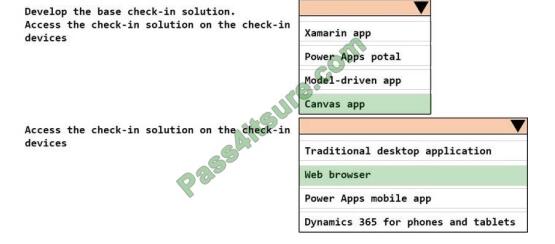
Are you preparing for the exam, then the latest AZ-900 dumps are definitely needed. We have prepared the AZ-900 dumps 2023 https://www.pass4itsure.com/az-900.html, courtesy of Pass4itSure and you can use it with confidence to prepare for the exam efficiently.
This blog will help you understand the AZ-900 exam: what it is, what AZ-900 dumps 2023 is, why you need it, free exam question materials, preparation tips, and more.
Let’s get started.
AZ-900 exam what is it?
This AZ-900 exam requires you to have a basic knowledge of cloud services and their delivery through Microsoft Azure. It’s tailored for Azure newcomers or individuals who are new to cloud-based solutions and services.
Whether you’re a novice or an experienced person, successfully passing the Microsoft AZ-900 exam can accelerate your career and prepare you to explore the many technology opportunities available in Azure.
What are AZ-900 dumps 2023?
AZ-900 dumps 2023 is a collection of the latest AZ-900 exam learning materials, providing you with the latest exam practice questions, which are all based on real exam content.
AZ-900 dumps 2023, a collection of questions distilled from Pass4itSure painstaking collection of work, expert preparation, and constant feedback, you will easily pass the Microsoft Azure Fundamentals AZ-900 exam by practicing it.
The above has answered the opening question, next.
Free AZ-900 exam question material sharing:
Question 1:
This question requires that you evaluate the underlined text to determine if it is correct.
Azure policies provide a common platform for deploying objects to a cloud infrastructure and for implementing consistency across the Azure environment.
Instructions: Review the underlined text. If it makes the statement correct, select “No change is needed”. If the statement is incorrect, select the answer choice that makes the statement correct.
A. No change is needed
B. Resource groups provide
C. Azure Resource Manager templates provide
D. Management groups provide
Correct Answer: C
Azure Resource Manager templates provide a common platform for deploying objects to a cloud infrastructure and for implementing consistency across the Azure environment.
Azure policies are used to define rules for what can be deployed and how it should be deployed. Whilst this can help in ensuring consistency, Azure policies do not provide a common platform for deploying objects to a cloud infrastructure.
References:
https://docs.microsoft.com/en-us/azure/governance/policy/overview
Question 2:
Note: This question is part of a series of questions that present the same scenario. Each question in the series contains a unique solution that might meet the stated goals. Some question sets might have more than one correct solution, while others might not have a correct solution. After you answer a question in this section, you will NOT be able to return to it. As a result, these questions will not appear on the review screen. You have a hybrid configuration of Azure Active Directory (Azure AD).
You have an Azure HDInsight cluster on a virtual network.
You plan to allow users to authenticate to the cluster by using their on-premises Active Directory credentials. You need to configure the environment to support the planned authentication.
Solution: You create a site-to-site VPN between the virtual network and the on-premises network.
Does this meet the goal?
A. Yes
B. No
Correct Answer: A
You can connect HDInsight to your on-premises network by using Azure Virtual Networks and a VPN gateway. Note: To allow HDInsight and resources in the joined network to communicate by name, you must perform the following actions:
Create Azure Virtual Network.
Create a custom DNS server in the Azure Virtual Network.
Configure the virtual network to use the custom DNS server instead of the default Azure Recursive Resolver. Congure forwarding between the custom DNS server and your on-premises DNS server.
References:
https://docs.microsoft.com/en-us/azure/hdinsight/connect-on-premises-network
Question 3:
HOTSPOT
For each of the following statements, select Yes if the statement is true. Otherwise, select No. NOTE: Each correct selection is worth one point.
Hot Area:
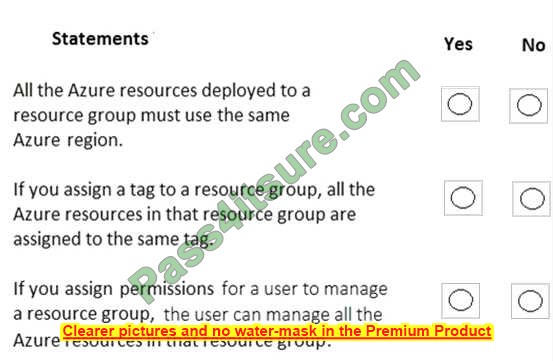
Correct Answer:
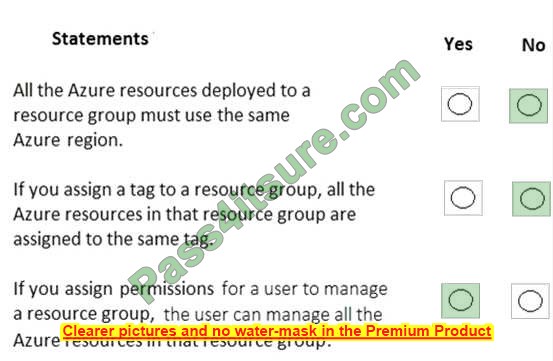
Box 1: No
Azure resources deployed to a single resource group can be located in different regions. The resource group only contains metadata about the resources it contains.
When creating a resource group, you need to provide a location for that resource group. You may be wondering, “Why does a resource group need a location?
And, if the resources can have different locations than the resource group, why does the resource group location matter at all?” The resource group stores metadata about the resources.
When you specify a location for the resource group, you\’re specifying where that metadata is stored. For compliance reasons, you may need to ensure that your data is stored in a particular region.
Box 2: No
Tags for Resources are not inherited by default from their Resource Group
Box 3: Yes
A resource group can be used to scope access control for administrative actions. By default, permissions set at the resource level are inherited by the resources in the resource group.
Reference:
https://docs.microsoft.com/en-us/azure/azure-resource-manager/resource-group-overview
Question 4:
HOTSPOT
Which node in the Azure portal should you use to assign a user the Reader role for a resource group? To answer, select the node in the answer area.
NOTE: Each correct selection is worth one point.
Hot Area:
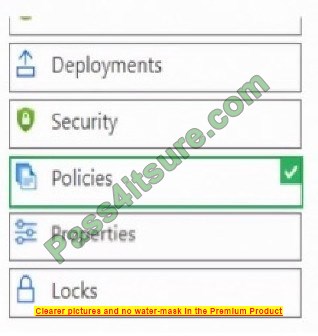
Correct Answer:
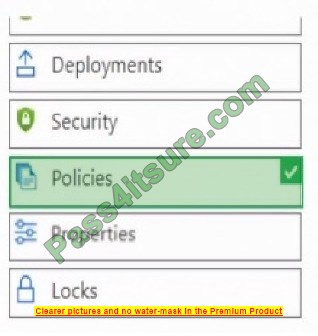
Question 5:
This question requires that you evaluate the underlined text to determine if it is correct.
You have an application that is comprised of an Azure web app that has a Service Level Agreement (SLA) of 99.95 percent and an Azure SQL database that has an SLA of 99.99 percent.
The composite SLA for the application is the product of both SLAs, which equals 99.94 percent.
Instructions: Review the underlined text. If it makes the statement correct, select “No change is needed”. If the statement is incorrect, select the answer choice that makes the statement correct.
A. No change is needed
B. the lowest SLA associated with the application, which is 99.95 percent
C. the highest SLA associated with the application, which is 99.99 percent
D. the difference between the two SLAs, which is 0.05 percent
Correct Answer: A
Composite SLAs involve multiple services supporting an application, each with differing levels of availability. For example, consider an App Service web app that writes to Azure SQL Database. At the time of this writing, these Azure services have the following SLAs:
1. App Service web apps = 99.95%
2. SQL Database = 99.99%
What is the maximum downtime you would expect for this application? If either service fails, the whole application fails. The probability of each service failing is independent, so the composite SLA for this application is 99.95% × 99.99% = 99.94%.
That\’s lower than the individual SLAs, which isn’t surprising because an application that relies on multiple services has more potential failure points.
Question 6:
Note: The question is included in a number of questions that depicts the identical set-up. However, every question has a distinctive result. Establish if the solution satisfies the requirements.
You have been informed by your superiors of the company\’s intentions to automate server deployment to Azure. There is, however, some concern that administrative credentials could be uncovered during this process.
You are required to make sure that during the deployment, the administrative credentials are encrypted using a suitable Azure solution.
Solution: You recommend the use of Azure Information Protection.
Does the solution meet the goal?
A. Yes
B. No
Correct Answer: B
Question 7:
HOTSPOT
For each of the following statements, select Yes if the statement is true. Otherwise, select No. NOTE: Each correct selection is worth one point.
Hot Area:
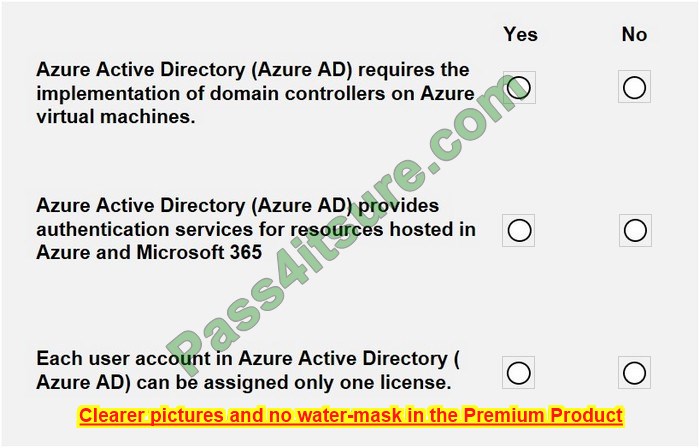
Correct Answer:
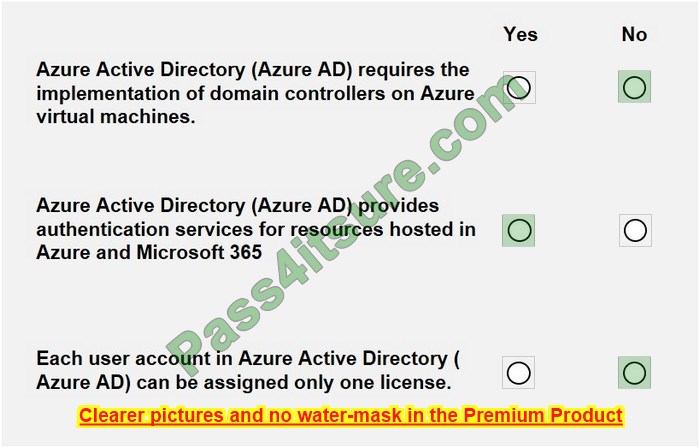
Box 1: No
Azure Active Directory (Azure AD) is a cloud-based service. It does not require domain controllers on virtual machines.
Box 2: Yes
Azure Active Directory (Azure AD) is a centralized identity provider in the cloud. This is the primary built-in authentication and authorization service to provide secure access to Azure resources and Microsoft 365.
Box 3: No
User accounts in Azure Active Directory can be assigned multiple licenses for different Azure or Microsoft 365 services.
Question 8:
What is a feature of an Azure virtual network?
A. resource cost analysis
B. packet inspection
C. geo-redundancy
D. isolation and segmentation
Correct Answer: D
Explanation:
Implement network segmentation patterns on Azure.
A unified enterprise segmentation strategy guides technical teams to consistently segment access using networking, applications, identity, and any other access controls. Create segmentation in your network footprint by defining perimeters.
The main reasons for segmentation are:
The ability to group related assets that are a part of (or support) workload operations.
Isolation of resources.
Governance policies set by the organization.
Reference:
https://docs.microsoft.com/en-us/azure/architecture/framework/security/design-network-segmentation
Question 9:
In which Azure support plans can you open a new support request?
A. Premier and Professional Direct only
B. Premier, Professional Direct, and Standard only
C. Premier, Professional Direct, Standard, and Developer only
D. Premier, Professional Direct, Standard, Developer, and Basic
Correct Answer: D
You can submit support request tickets in the following plans: Premier, Professional Direct, Standard, Developer, and Basic.
Reference:
https://azure.microsoft.com/en-us/support/plans/
Question 10:
Your company plans to automate the deployment of servers to Azure. Your manager is concerned that you may expose administrative credentials during the deployment.
You need to recommend an Azure solution that encrypts the administrative credentials during the deployment.
What should you include in the recommendation?
A. Azure Key Vault
B. Azure Information Protection
C. Azure Security Center
D. Azure Multi-Factor Authentication (MFA)
Correct Answer: A
Azure Key Vault is a secure store for storing various types of sensitive information. In this question, we would store the administrative credentials in the Key Vault. With this solution, there is no need to store the administrative credentials as
plain text in the deployment scripts.
All information stored in the Key Vault is encrypted. Azure Key Vault can be used to Securely store and tightly control access to tokens, passwords, certificates, API keys, and other secrets.
Secrets and keys are safeguarded by Azure, using industry-standard algorithms, key lengths, and hardware security modules (HSMs). The HSMs used are Federal Information Processing Standards (FIPS) 140-2 Level 2 validated.
Access to a key vault requires proper authentication and authorization before a caller (user or application) can get access. Authentication establishes the identity of the caller, while authorization determines the operations that they are allowed
to perform.
References:
https://docs.microsoft.com/en-us/azure/key-vault/key-vault-overview
Question 11:
HOTSPOT
Select the answer that correctly completes the sentence.
Hot Area:
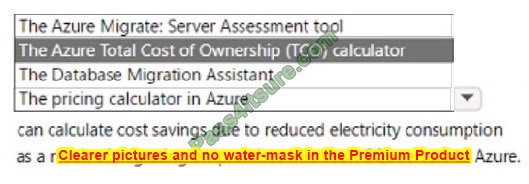
Correct Answer:
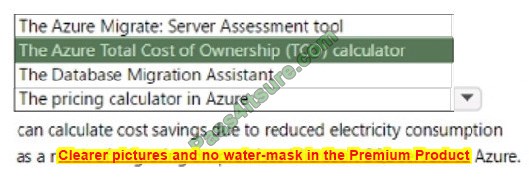
Question 12:
HOTSPOT
You create a resource group named RG1 in Azure Resource Manager.
You need to prevent the accidental deletion of the resources in RG1.
Which setting should you use? To answer, select the appropriate setting in the answer area.
Hot Area:
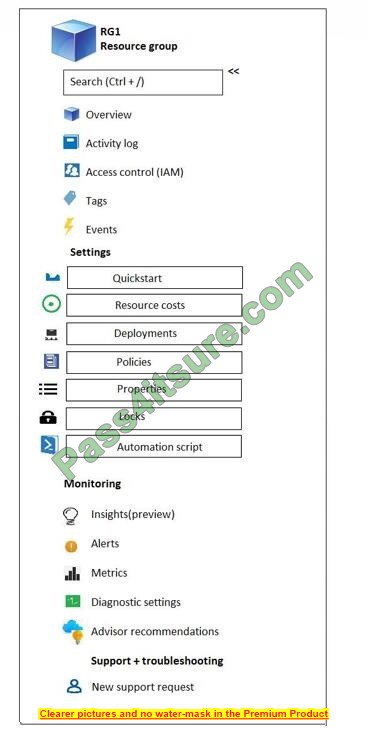
Correct Answer:
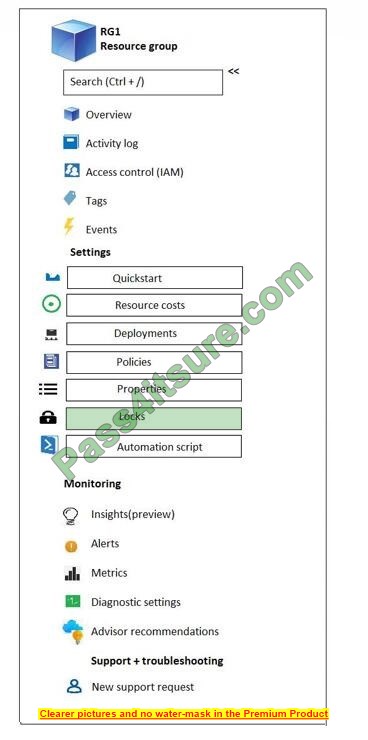
You can configure a lock on a resource group to prevent accidental deletion.
As an administrator, you may need to lock a subscription, resource group, or resource to prevent other users in your organization from accidentally deleting or modifying critical resources. You can set the lock level to CanNotDelete or ReadOnly. In the portal, the locks are called Delete and Read-only respectively.
1. CanNotDelete means authorized users can still read and modify a resource, but they can’t delete the resource.
2. ReadOnly means authorized users can read a resource, but they can’t delete or update the resource. Applying this lock is similar to restricting all authorized users to the permissions granted by the Reader role.
Reference: https://docs.microsoft.com/en-us/azure/azure-resource-manager/resource-group-lock-resources
Question 13:
DRAG DROP
You are the Microsoft 365 administrator for a company. The company supports an aggressive rollout of features.
You need to release features as soon as they are released.
Which feature phase should you use for each development step? To answer, drag the appropriate feature phases to the correct development steps. Each feature phase may be used once, more than once, or not at all. You may need to drag
the split bar between panes or scroll to view content.
NOTE: Each correct selection is worth one point.
Select and Place:
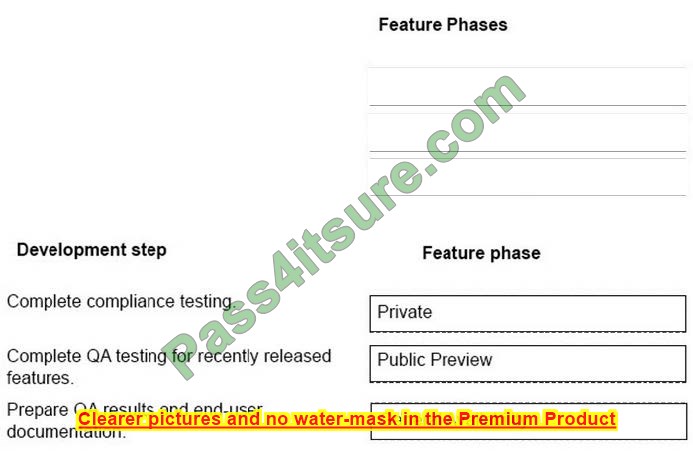
Correct Answer:
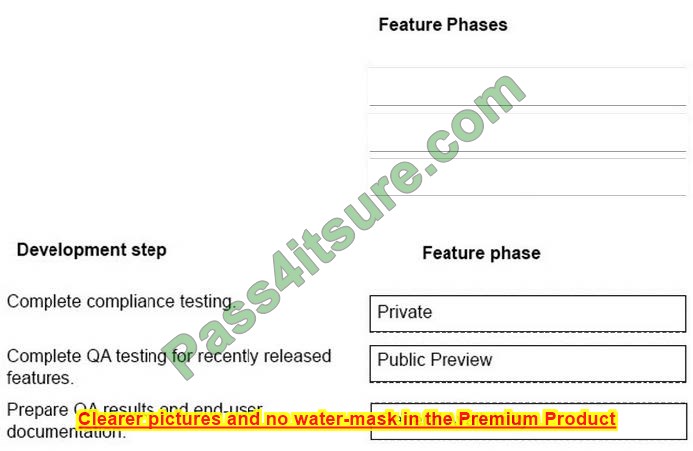
Question 14:
HOTSPOT
Select the answer that correctly completes the sentence.
Hot Area:
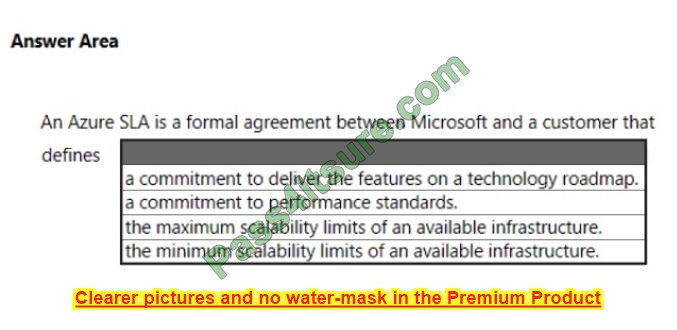
Correct Answer:
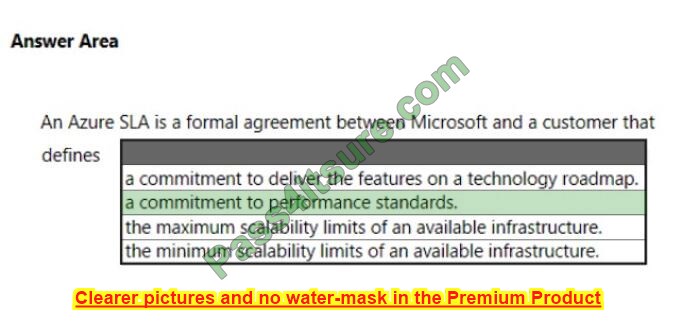
Explanation:
What is the SLA for Azure?
A Service Level Agreement or SLA is a formal document that provides specific terms that state the level of service that will be provided to a customer. Microsoft\’s Azure SLA defines three primary characteristics of Azure service, performance
targets, uptime, and connectivity guarantees.
The performance target specifies a guaranteed uptime, expressed in 9\’s, as is common in the IT industry. Azure uptime performance targets range from three nines or 99.9% uptime to four nines or 99.99% depending upon the resource.
Azure databases for MySQL, for example, guarantee a 99.99% uptime.
Azure SLAs also define how Microsoft responds if an Azure resource fails to perform according to the SLA specification. In some cases, Microsoft may apply a discount to the customer bill as compensation.
Reference:
https://cloudacademy.com/course/understanding-azure-pricing-and-support/service-level-agreements/
Question 15:
Fill in the blank If an Azure virtual machine has a status of Stopped (deallocated), you will continue to pay for (_______________)
Correct Answer: storage
latest AZ-900 dumps pdf: https://drive.google.com/file/d/1hZ669aYL7-AqIuq0sfI9NDsBbnGCQa3Y/view?usp=share_link
Summary
Hope this blog will help you. The key to successfully passing the Microsoft Azure Fundamentals exam is to get the latest AZ-900 dumps in 2023.
With that in mind, Pass4itSure has provided the latest AZ-900 dumps 2023 https://www.pass4itsure.com/az-900.html (604 questions in total) to help you pass the exam.
